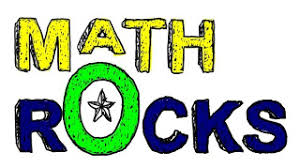
-
Math at Mays is exciting.
Math is a way for students to explore their environment and make sense of the world around them. Math education may look different than when you were in school. Math has become less about memorizing formulas and specific steps to solve problems and more about analyzing problems and working collectively, and creatively, to solve them. We ask ourselves questions like:
- What is the problem?
- What do I know about how numbers work?
- How can I apply what I know to solve the problem?
We listen and learn from teachers and peers as they share ways of thinking about problems that may be different than our own. We experience productive struggle. We attempt, we reflect, we review, and we try again. This process builds our capacity to solve problems not just in math, but in the broader world as we encounter it.
For more information on how math education has changed, read Helping Your Child With Today's Math. For a look at math lessons at Mays, watch the videos below. The videos show Mays teachers teaching a variety of ways to solve problems. For Math Curriculum information, see the bottom of the page.
We hope you enjoy your math journey at Mays.
Box Method: A way to think about division
Math Talk: Math conversations at home & school
Partial Quotient Method: A way to think about division
-
Math Curriculum Grades K-2
Math Curriculum Grades 3-5
We use the TQE (Tasks Questions Evidence) framework to plan our mathematical experiences. TQE is a fluid ‘lens’ through which math instruction and learning is seen. TQE, at its core, is about:
- Selecting Tasksthat support learning goals, promote deep mathematical understanding, allow for multiple entry points, and drive student voice in the mathematical experience.
- Using Questionsthat facilitate student discourse and engagement in mathematical practices. These questions also promote higher order thinking and productive struggle, such as: probing for understanding, pushing for multiple perspectives and solutions, using wait time effectively, scaffolding and adjusting questions as needed.
- Gathering and utilizing Evidenceof student learning through formative and informal assessment.
Additionally, our students will develop automaticity of basic math facts through our Math Facts curriculum.






